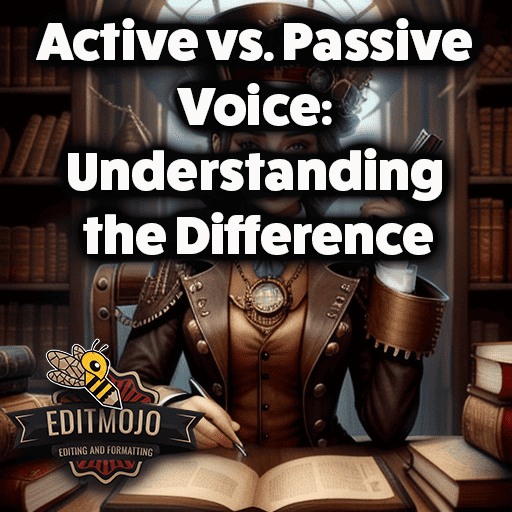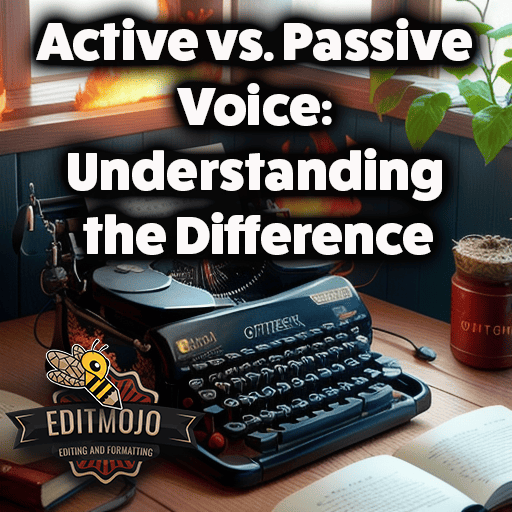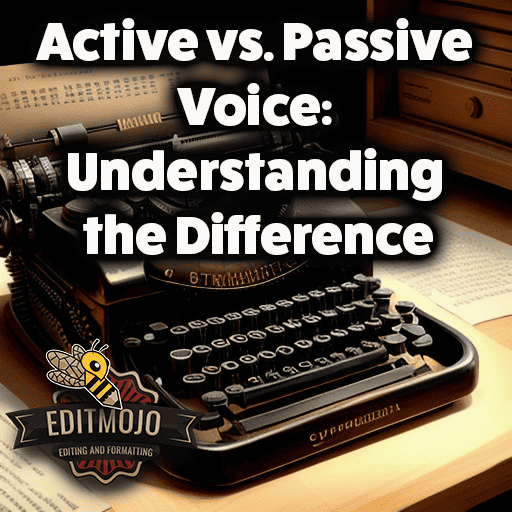Active vs. Passive Voice: Understanding the Difference
Active vs. passive voice: Understanding the difference. The rules of English grammar are as vast as the ocean. Among those countless rules, the distinction between active and passive voice is perhaps one of the most vital. So, let’s embark on this journey of exploration. As linguist and cognitive scientist Steven Pinker once said, “Passive voice is when the noun being acted upon gets promoted to the subject slot; active voice is when the subject is doing the acting.”
Key Takeaway Table
| Concepts | Active Voice | Passive Voice |
|---|---|---|
| Definition | The subject performs the action. | The subject is acted upon by the verb. |
| Structure | Subject + Verb + Object | Subject + Be Verb + Past Participle + (by + Agent) |
| Common Misconceptions | Active voice is the only correct way to write or speak. | All sentences containing ‘by’ are in passive voice. |
| Usage | More engaging and direct; typically results in clearer, shorter sentences. | Useful when the action is more important than the performer, or when the actor is unknown. |
| Examples | The cat chased the mouse. | The mouse was chased by the cat. |
Understanding the difference between active and passive voice can have profound effects on how you communicate. These seemingly small shifts in sentence structure can affect clarity, engagement, and overall readability. This post aims to demystify these grammatical concepts, providing a comprehensive guide to help you recognize and use active and passive voice more effectively.
II. Active Voice
In active voice, the subject of the sentence performs the action. It follows the basic structure: Subject + Verb + Object. Consider this simple sentence: “The cat chased the mouse.” Here, ‘the cat’ is the subject, ‘chased’ is the verb, and ‘the mouse’ is the object.
Common Mistakes or Misconceptions
One common misconception about active voice is that it is the only way to write or speak correctly. This is not the case, and there are many instances where passive voice can be effective or even necessary.

Personal Anecdote
When I first began writing professionally, I had a tendency to use passive voice frequently. My editor, a seasoned writer, took me aside one day and explained the power of active voice. She compared it to a fast-moving stream, carrying the reader along on a current of action. It was a piece of advice that completely transformed my approach to writing.
Why You Need Active Voice
Active voice tends to be more direct and engaging. It often results in clearer, shorter sentences, which can make your writing more accessible to readers. A study in organizational communication showed that emails written in active voice were more likely to elicit prompt, constructive responses.
III. Passive Voice
In passive voice, the subject of the sentence is acted upon by the verb. It follows the structure: Subject + Be Verb + Past Participle + (by + Agent). A simple example is: “The mouse was chased by the cat.” ‘The mouse’ is the subject, ‘was chased’ is the verb, and ‘by the cat’ is the agent performing the action.
Common Mistakes or Misconceptions
One common mistake is to assume that all sentences containing ‘by’ are in passive voice. This is not necessarily true. For example, in the sentence “She was upset by the news,” ‘by the news’ is not an agent performing an action, so this is not a passive sentence.
Personal Anecdote
I once encountered a passive sentence that had been stretched out to an absurd degree in a legal document. It took me several readings to figure out who was doing what to whom. From then on, I understood why legal and bureaucratic documents often have a reputation for being difficult to read!

Reasons Why Passive Voice is Necessary
Passive voice can be useful when the action is more important than who or what is performing the action, or when the actor is unknown. In scientific writing, for example, passive voice is often used to emphasize the action and maintain a sense of objectivity.
A study in scientific writing found that passive voice can create a clear, objective tone.
IV. Comparing Active and Passive Voice
Active and passive voice serve different functions and can create distinct effects. Active voice generally results in concise, direct sentences, and passive voice often adds length and complexity. For more insights on this topic, check out this interview with linguist Professor David Crystal on active and passive voice.
V. The ‘Secrets’ of Balancing Active and Passive Voice
Understanding when to use active or passive voice is the ‘secret’ to effective communication. Active voice is ideal for most direct, straightforward communication. Passive voice, on the other hand, is suited to formal or objective contexts, or when the focus is on the action rather than the actor.
As a writer, the balancing act between active and passive voice can be likened to a dance. You must know when to step forward, take the lead (active voice), and when to step back, allowing the other to lead (passive voice). In the immortal words of the poet John Milton, “The mind is its own place, and in itself can make a heaven of hell, a hell of heaven.” Much like the mind, the choice between active and passive voice can greatly influence the effectiveness of our communication.

VI. Common Pitfalls and How to Avoid Them
Overuse or misuse of either voice can lead to issues in clarity and reader engagement. To avoid common pitfalls in writing, try to use active voice when you want to create clear, engaging, direct sentences. Use passive voice when you want to emphasize the action, or when the actor is unknown or unimportant.
VII. Recap and Conclusion
Understanding the difference between active and passive voice can drastically improve your communication skills, whether you’re writing an email, a novel, or a research paper. As the acclaimed author George Orwell said, “Good prose is like a windowpane.” Understanding active and passive voice can help you clear that windowpane, allowing your ideas to shine through unobstructed.
VIII. Call to Action
Now that you’ve learned about the differences between active and passive voice, the next step is to put that knowledge into practice. Write a paragraph or two and try to identify instances of active and passive voice in your writing. There are also several online resources like Grammarly that can help you identify and correct instances of passive voice.
As you continue your journey in mastering English grammar, remember to take note of how professional writers use active and passive voice. In our next post, we will be exploring other dimensions of English grammar, so stay tuned!
Top Five Questions and Answers
- What is the main difference between active and passive voice? In active voice, the subject of the sentence performs the action (e.g., “The cat chased the mouse”). In passive voice, the subject is acted upon by the verb (e.g., “The mouse was chased by the cat”).
- When should I use active voice? Active voice is generally more direct and engaging, making it suitable for most types of writing. It is especially useful when you want to clearly convey who is doing what.
- When should I use passive voice? Passive voice is often used when the actor is unknown or irrelevant, or when the action itself is more important. It is frequently found in scientific or formal writing.
- Can I use both active and passive voice in the same document? Yes, the choice between active and passive voice depends on what you want to emphasize in each sentence. A well-balanced document may use both.
- What are some common mistakes with using active and passive voice? A common mistake with active voice is overuse, which can make writing sound repetitive. With passive voice, a common mistake is unnecessary use, leading to wordy, complex sentences.
Active Voice
- John ate the apple.
- The choir sang the song beautifully.
- The director will produce the movie next year.
- The teacher praised the student for her hard work.
- The dog chased the cat around the yard.
- The author wrote the best-selling novel in a month.
- The team won the championship.
- The artist painted a beautiful portrait.
- The scientist discovered a new species of butterfly.
- The gardener planted new flowers in the spring.
Passive Voice
- The apple was eaten by John.
- The song was beautifully sung by the choir.
- The movie will be produced by the director next year.
- The student was praised by the teacher for her hard work.
- The cat was chased around the yard by the dog.
- The best-selling novel was written by the author in a month.
- The championship was won by the team.
- A beautiful portrait was painted by the artist.
- A new species of butterfly was discovered by the scientist.
- New flowers were planted by the gardener in the spring.
